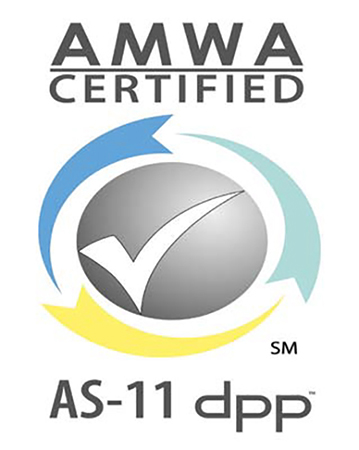DPP Is Ready to Roll
HOLLYWOOD—In 2008, when Fox rolled out its digital delivery initiative—setting a timeline to convert from tape-based to file-based delivery—the broadcaster also began having conversations with the Digital Production Partnership, a like-minded broadcast group in the United Kingdom. “They were also fully confident that the U.K. would go digital, but they wanted to take a little extra time in assessing the profile and standards,” says John Koscheka, executive vice president, Digital Manufacturing & Distribution at Twentieth Century Fox. “We said we’d support that. It could perhaps be an expanded opportunity for the rest of the world.”
Six years later, beginning Oct. 1, 2014, the DPP has unveiled its new standard, which dictates the common file format, structure and wrapper of any file-based programming delivered to a U.K. broadcaster [see sidebar]. Paul Turner, vice president of enterprise product management at Telestream in Nevada City, Calif., notes that U.S. content creators and distributors simply don’t have a choice about providing DPP-compliant content. “If they want their programming to be shown by a U.K. broadcaster, then it has to be DPP by the time it hits the BCC loading dock,” he said. “No negotiation, no compromise.”

John KoshekaWHAT IS IT?
Never heard of DPP? You’re not alone; many U.S. production and post executives haven’t either. Nevertheless, DPP Technical Standards Lead Kevin Burrows, who is also CTO for Broadcast & Distribution at Channel 4, says most of the Hollywood studios, as well as Deluxe and Technicolor, are already on board. “London is already delivering content in the new DPP standard,” a spokesperson for Technicolor said. “Our head of broadcast in Hollywood has indicated that we are integrating the new standard on the appropriate shows being done here too,” he says. “But it’s only now being integrated. And everyone is only now getting their heads around the new British broadcast standard.”
Fox, which began its conversations with Burrows and the DPP years ago, has followed the development of the standard from the beginning. “We’ve been doing R&D analysis with spec parameters they’re proposing,” says Koscheka. “We brought that in to our own R&D teams and they’ve run it through trials to confirm that we can operationalize it.”
Manufacturers of transcoding gear have also stepped up to the plate. Telestream’s Vantage offers capabilities for assembling and encoding DPP AS-11 MXF files. “We consider this to be a workflow automation and transcoding platform,” says Turner. “It has the ability to manage how a piece of media is passed through a large part of the workflow and through our own encoding. Vantage can analyze the video you’ve given it and make sure it gets the proper transcode.”
“We believe in file-based workflow and we believe standards is the way to move forward,” he adds. “So it makes perfect sense for us to be part of this from the outset.”
Dalet also announced that it’s ready for DPP; its platform was among the first to receive AS-11 UK DPP certification. The company has already deployed high-speed file playback, transcoding and standards conversion for BT Sport and Timeline Television, BT Sport’s new, fully DPP-based file-based production and play-out facility.
Get the TV Tech Newsletter
The professional video industry's #1 source for news, trends and product and tech information. Sign up below.
Digging into DPP: What Is the Standard?
The Digital Production Partnership is a nonprofit partnership funded and led by the BBC, ITV and Channel 4 with representation from Sky, Channel 5, S4/C, UKTV and BT Sport. The group came together around the issue of standardizing file-based delivery. After first publishing common tape-based delivery standards in 2011, the DPP Technical Standards working group next created the U.K.’s first common file format, structure and wrapper to enable TV program delivery by file. After several years of work, they published the results in January 2012.

DPP is based on the MXF file format, AVC Intra compression at 100 Mbps for HD and IMX at 50 Mbps for SD and, perhaps most importantly, includes a “minimum set of requirements” for program editorial and technical metadata.
More specifically, with regard to the MXF file format, the DPP has chosen AS-11, one of many Application Specifications of MXF and a “tightly constrained” version of AS-03, one of the simplest ones. AS-11 and other application specifications are the fruit of the Advanced Media Workflow Association (AMWA), whose mission is to “develop specifications and technologies to facilitate the deployment and operation of efficient media workflows.” Although not a standards-setting body, AMWA works closely with standards-setting bodies including SMPTE and the DPP.
Want to make sure your content is DPP-compliant? Now you can: At the 2014 IBC Show, AMWA and vendors unveiled an AS-11 DPP Compliance and Certification Program to ensure interoperability. Dalet and Telestream are among the first vendors to receive certification.
Debra Kaufman
In the U.K., DPP-led training and marketing has been key to spreading the word in the production and post community, including several “Interoperability Days,” which are workshops to “create, exchange and test files for interoperability.” More than 25 equipment manufacturers and post-production companies so far have taken part in these workshops. The DPP also held workshops specifically for the post-production community and published numerous supporting documents including a Producer’s Guide to File Delivery, available for download on the DPP website.
“The DPP trained people, from tiny post houses to major corporations like the BBC in how it would be an advantage,” says Bruce Devlin, chief media scientist for Dalet Digital Media Systems. “Given there was a spec, that rollout was key, and they did it really well.” The result is that every major manufacturer of transcoders is now DPP-compliant. “We all worked together,” Devlin adds. “We did all we could to make sure our transcoders worked seamlessly together.”
GETTING UP TO SPEED
In the United States, however, content producers and post houses still need to get up to speed on the implications of DPP. According to Burrows, U.S. producers need to be aware of two aspects. “One is commissioned programs from the U.S. to the U.K., of which there aren’t many,” he says. “Then there are the U.S. studio programs that the U.K. broadcasts, and that’s a significant amount.”
The U.S. market, as of yet, hasn’t had as concentrated a focus on creating a standard for file-based delivery. “In my opinion, the domestic market has not yet fully embraced IP-based file delivery to the degree of international markets,” says Koscheka. “This is probably due to the U.S.’s reliance on satellite delivery, which has made file-based standards less critical until now.”
But that doesn’t mean that there is no interest in a standard, be it DPP or something else. The Joint Task Force for File Format Media Operability is reviewing available technologies. “The goal is to figure out, ‘are we just doing a DPP or is it more than that?’” says Devlin, who is on the board. “Do we have to standardize working practices? Is DPP the right solution for North America?” The Joint Task Force isn’t near making a decision.”
Meanwhile, informed parties are watching the DPP rollout closely. “We’re very interested to see how things develop with DPP specification in the U.K.,” Koscheka says. “We certainly support it, and if there’s an opportunity to leverage it elsewhere, we have no qualms with that. The bigger picture is to see how this does develop in the U.K. and if there’s added value outside that market.” Koscheka notes the possibility that DPP might be adopted by other, non-English speaking markets.
But any hope that DPP might become a universal international standard has already been dashed. According to Turner, German broadcasters have already stated they won’t accept DPP, and France and Italy are just taking a look at it. “It may not be as simple as saying, ‘we have a new standard,’” Koscheka concludes. “People have the misapprehension that, in a file-based world, now it’s easy. But the same level of care that went into the U.K. deployment would have to go into a similar deployment in non-English speaking countries. A lot of thought went into the whole process behind DPP.”
